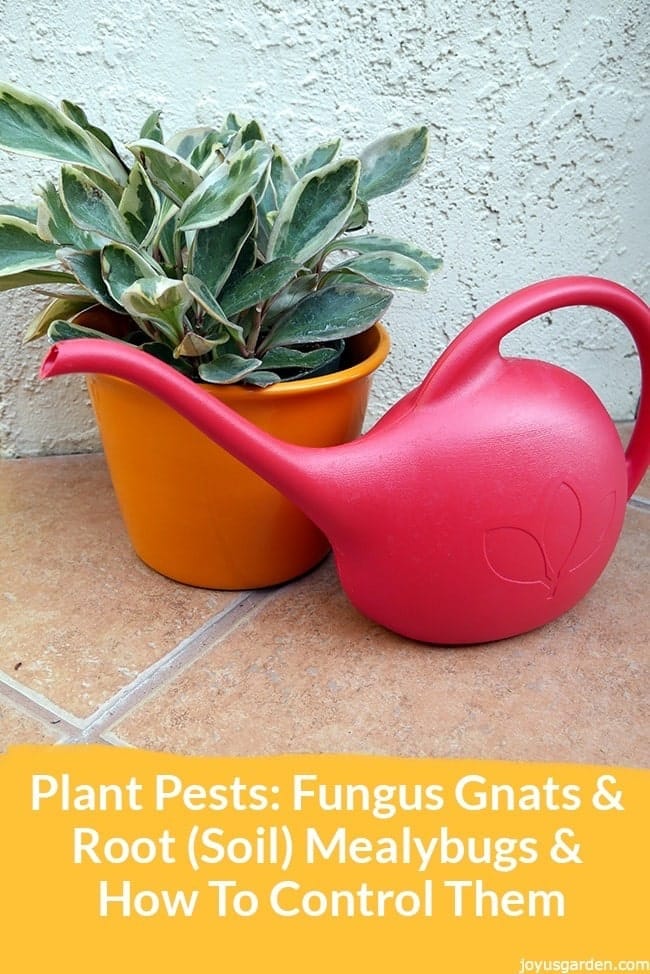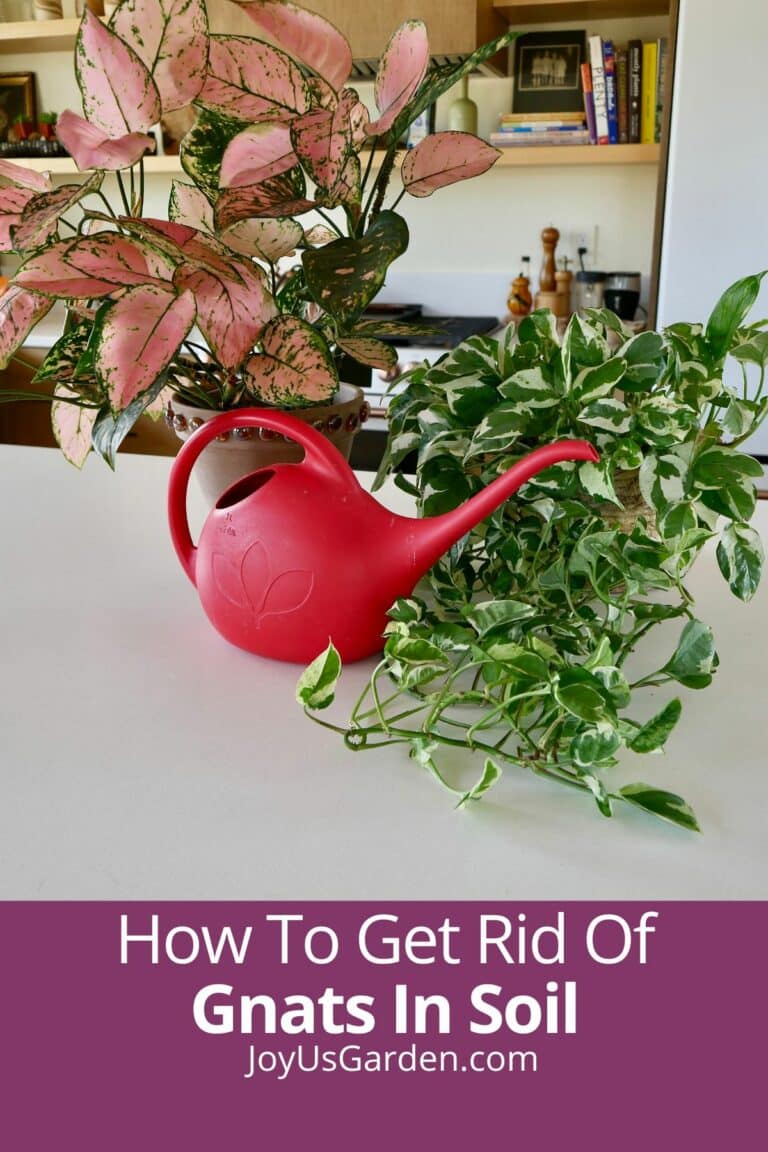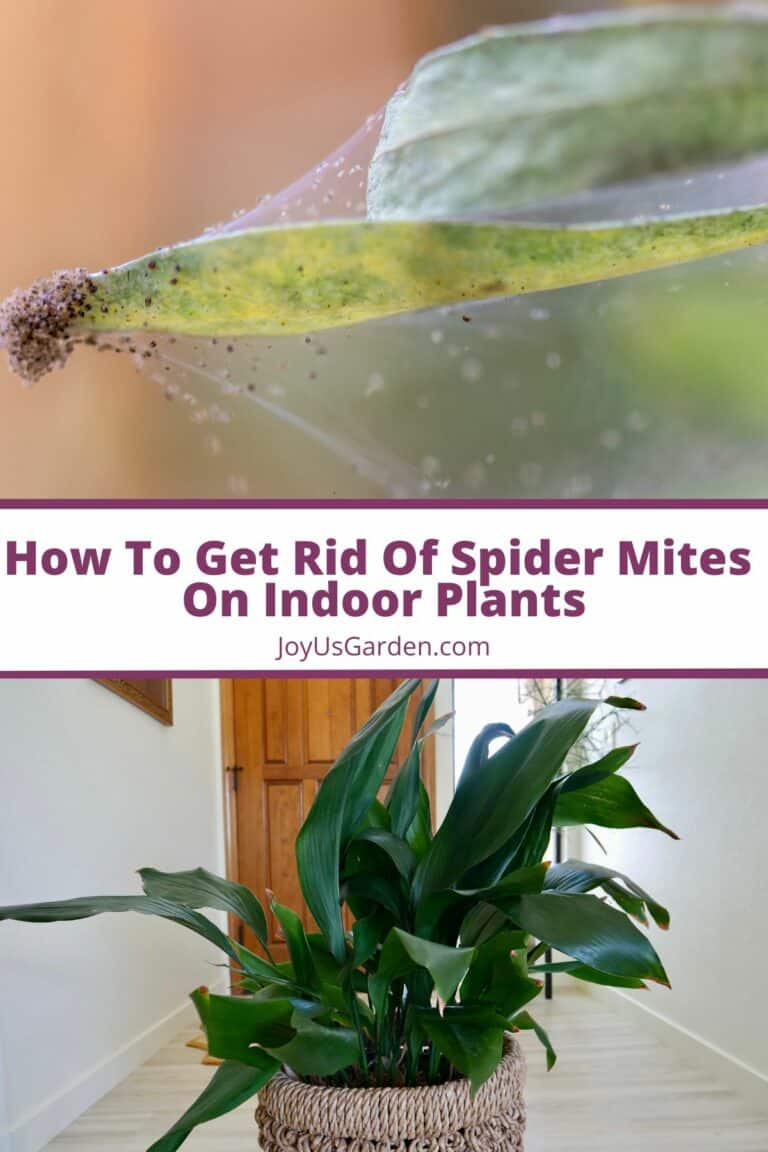How To Get Rid Of Thrips On Plants
Tiny yet tenacious, thrips are common pests that affect indoor and outdoor plants, as well as flowering plants and vegetables. Although it can be easy to overlook a small thrip infestation, a major infestation of thrips can cause significant damage to plant leaves and fruit, and they can even spread devastating plant diseases, like tomato spotted wilt virus.
However, while pest thrips are certainly troublesome, the simple and organic tips in this guide will help you get rid of thrips on indoor plants or in an outdoor garden in no time flat!
This post may contain affiliate links, you can read our policies here.
What Are Thrips
Like aphids and spider mites, thrips (Thysanoptera) are tiny insects that feed on plant sap and are often found congregating in large groups on the underside of leaves, as well as plant flowers and stems. There are over 7000 different species of thrips, including onion thrips and western flower thrips.
Many thrips species are specialist feeders that feed on a single type of host plant; however, some thrips are generalists that may target a wide variety of houseplants and garden plants.
Since thrips only measure about 1/25” long, a thrips infestation may look like tiny squiggles or threads to the naked eye. But if you inspect thrips with a magnifying glass, you’ll notice that these small, slender insects have long, narrow bodies ranging from yellow and brown to black.
Adult thrips typically have small, fringed wings that lay back over their bodies, while thrips in the larval stage are wingless.
Thrips are most active during warm weather, and their populations typically peak in late spring to mid-summer. While a single thrip won’t do much damage, female thrips lay about 300 eggs each, and thrips can complete their entire life cycle in just 16 days!
Considering how fast thrips populations can bloom, treating infested plants at the first signs of thrips is important so your pest problem doesn’t spread.
What Causes Thrips
Thrips naturally occur in the wild; minor thrip damage is normal in even the healthiest gardens. However, while some activity is to be expected, thrips are more likely to be a problem if your plants are already suffering from stress.
Because healthy plants can naturally resist many pests and diseases, the single best way to keep thrips in check is to provide your plants with the proper balance of light, water, and nutrients.
Although thrips target sickly and stressed plants, they are also likely to occur in weedy gardens since thrips often utilize weeds as host plants. On top of that, thrips populations can boom if chemical pesticides are applied too liberally to outdoor spaces. Often, these products won’t harm thrips but will kill off the beneficial insects that naturally prey on thrips in outdoor garden spaces.
Although thrips can be a nuisance to outdoor plants, these pests are even more problematic for houseplants since thrips don’t have any natural predators indoors. Most of the time, thrips hop a ride indoors on new plants purchased from garden centers; however, thrips can also sometimes make their way inside by riding the breeze in through an open window.
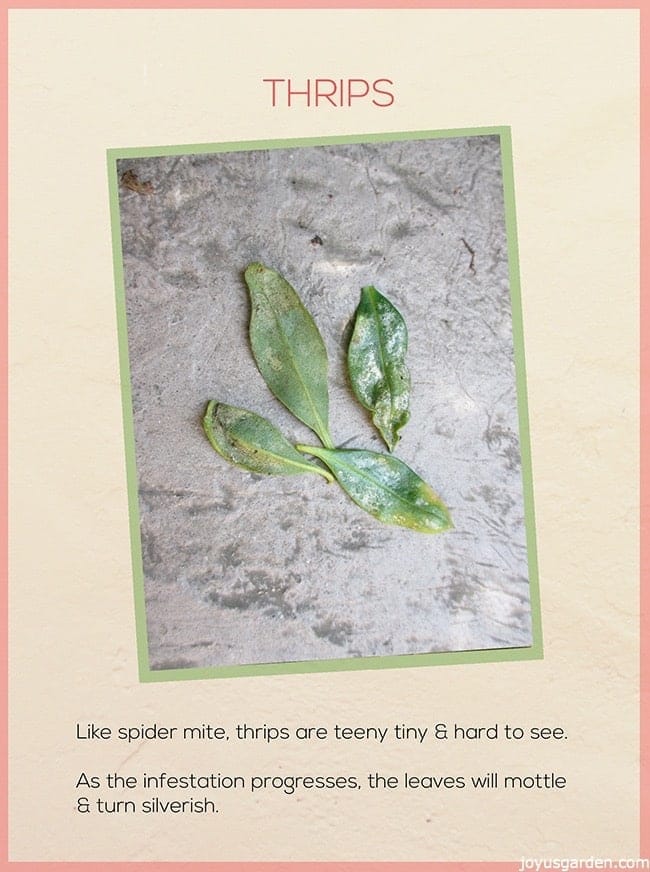
Identifying Thrips On Plants
Detecting the presence of thrips can sometimes be tricky due to the small size of these insects. However, there are a few ways to identify a thrip problem before it gets out of hand.
Keeping sticky traps around vulnerable plants will alert you to thrips problems, as well as other pest insects. Thrips tend to be easiest to spot on blue sticky traps, while yellow sticky traps aren’t as useful for thrips. Yellow traps are more likely to accidentally lure in the beneficial bugs that naturally prey on thrips… and you don’t want that!
Aside from traps, another effective way to determine if you’re dealing with thrips or another plant pest is to gently shake an affected plant over a sheet of paper or another item with a white background. Thrips are not strong fliers; a gentle shake is often all it takes to dislodge them from plant leaves. If small insects or tiny black dots tumble out of your plant and onto your paper sheet, you may have a thrips problem!
How To Prevent Thrips
While thrips can be a headache, the good news is that you can keep these pests from becoming a problem by maintaining the health of your plants. Often, healthy plants can repel thrips all on their own!
Beyond that, keep outdoor gardens as organic as possible to attract ladybugs, lacewings, and other beneficial predators that will prey on thrips and other plant pests. You can also keep thrips at bay by adding reflective mulch or aluminum foil under vulnerable plants and installing floating row covers in early spring before thrips emerge from winter hibernation.
Companion planting with strongly scented plants like basil can also be a good idea, as many herbs naturally repel thrips and garden pests. Don’t forget to stay on top of weeds and clean up your garden in the fall to keep thrips eggs from overwintering in plant debris and old leaf litter.
If you keep indoor plants and want to ensure that thrips never invade, always inspect new plants before bringing them into your home, and only purchase plants from reliable garden centers.
To be extra safe, you may also want to quarantine new plant arrivals for 2 to 3 weeks before moving them near your other precious plants and/or spray plant leaves with a preventative insecticidal soap spray made with a gallon of water and a small squirt of dish soap. If you prefer, here’s an insecticidal soap you can buy.
Damage Caused By Thrips
One of the tough things about dealing with these pests is that thrips damage is often confused with plant diseases and fungal issues. As a result, plant keepers may not realize that thrips have invaded their plants until their populations grow quite large. However, there are a few key signs to look for that will alert you to these problems.
Aside from seeing thrips on your plants, you may also notice that infected plants aren’t growing well, and flowering plants may drop their flower buds prematurely. When thrips feed and drain plant juices away, plant leaves may become pale and develop a silvery, splotchy, or mottled appearance.
As infestations progress, leaves may become distorted, grow into twisted shapes, or drop off the plant entirely.
Another clear indication that your plants have thrips is the presence of thrips frass. Thrips frass resembles tiny black spots on the underside of plant leaves, and large quantities of frass may signal that you’re dealing with a lot of thrips!
Thrips On Indoor Plants
Thrips often arrive indoors on infected houseplants, and they can rapidly spread throughout entire houseplant collections since they don’t have natural enemies indoors. Specialist thrip species, like citrus thrips, may target specific plants like dwarf kumquats and Meyer lemons; however, generalist thrip species can invade various houseplants, including African violets and spiderworts.
If you suspect that you’re dealing with thrips indoors, the first step you need to take is to isolate any infected plants to keep thrips from spreading. After that, try out some of the natural treatment methods listed below to rid your houseplants of thrips once and for all.
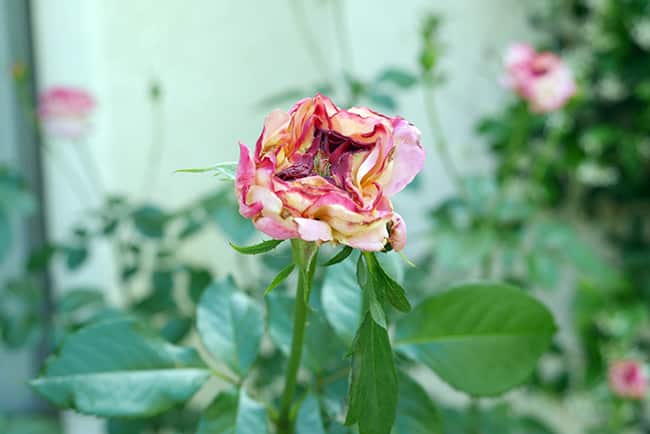
Thrips On Outdoor Plants
Minor thrip damage is expected in outdoor gardens, and often, the best solution is to accept that some pest damage is inevitable on outdoor plants. That said, large infestations of thrips can be problematic, but they’re easily controlled using the natural pest control techniques listed below.
As with indoor thrips, thrips infecting outdoor gardens may target a specific plant type or find their way onto different flowers, vegetables, and fruiting plants. Some of the most common plants plagued by thrips include gladioli, azaleas, roses, beans, carrots, squash, and onions.
Nell, the owner of Joy Us garden, was a professional gardener in the San Francisco Bay Area for many years. She saw thrips infestations on rhododendrons, azaleas, camellias, and viburnums.
When she moved south to Santa Barbara, it was thrips on Myoporums. Her neighbors had a 35′ hedge that bordered her property on the other side of a wooden fence. She looked at the tops of the gnarled, discolored, and distorted foliage every day!
How To Control and Get Rid Of Thrips Indoors & Outdoors
While preventing infestations is always the best option, if thrips have overwhelmed your plants, there are plenty of natural ways to control these pests. Often, the best strategy is to use multiple treatment and prevention methods at once — a tactic known as integrated pest management (IPM). That way, you’ll be sure to eradicate thrips at any stage of their lifecycle!
To get started, isolate infected plants if you can and then use a strong blast of water to dislodge thrips and eggs from plant leaves and stems. Indoor plants can be rinsed off in the kitchen sink, while a garden hose is handy for washing off outdoor plants.
After spraying your plants with water, apply insecticidal soap or neem oil, spraying your plants liberally with the mixture. Be sure to coat the upper and lower sections of plant leaves as well as the top of the soil line. Reapply the treatment spray every 7 to 10 days following the instructions on the bottle until all signs of thrips have vanished.
For best results, never apply spray treatments when the sun is high overhead, and avoid spraying plant flowers, as even mild insecticide products can harm pollinators when applied improperly.
While natural pesticide sprays do work against thrips, these treatments work best in conjunction with the prevention methods listed above. You may also want to try releasing beneficial insects into your garden, like ladybugs, lacewings, predatory mites, and minute pirate bugs. These predatory insects can all be purchased online, and once they’re released in your garden, they’ll take care of thrips and other pests for you!
How To Get Rid Of Thrips On Plants FAQs
Most adult thrips have wings, but they aren’t strong flyers. Instead, thrips use their wings to fly between plant leaves when disturbed and can also glide about on gentle air currents or outdoor breezes.
There are many different species of thrips, and different thrips prefer different types of plants. Thrips can target both soft-stemmed and woody plants, as well as vegetables, herbs, flowers, and houseplants. Roses, azaleas, rhododendrons, ferns, camellias, and viburnums are quite vulnerable to thrips, as are squash, onions, African violets, and beans.
Sometimes, you may actually spot thrips on your plants, but you can also identify thrip problems from the damage these pests leave behind.
Thrips damage plants by sucking away their sap, and this can cause plant leaves to discolor or develop stippled or pale coloration. Using blue sticky traps or shaking infected plants over a blank piece of white paper can help you determine if you’re dealing with thrips or another variety of plant pest.
Conclusion
Thrips are certainly troublesome pests, but control is relatively easy and can be done with all-natural treatment methods. By inspecting plants from time to time and installing preventive measures like row covers and companion plants, you can usually keep thrips out of your garden and houseplant collection.
However, if thrips do find their way onto your plants, try out some of the different methods we’ve covered today, and your plants will be thrip-free and healthy again soon!
Happy Gardening,
-Lauren



